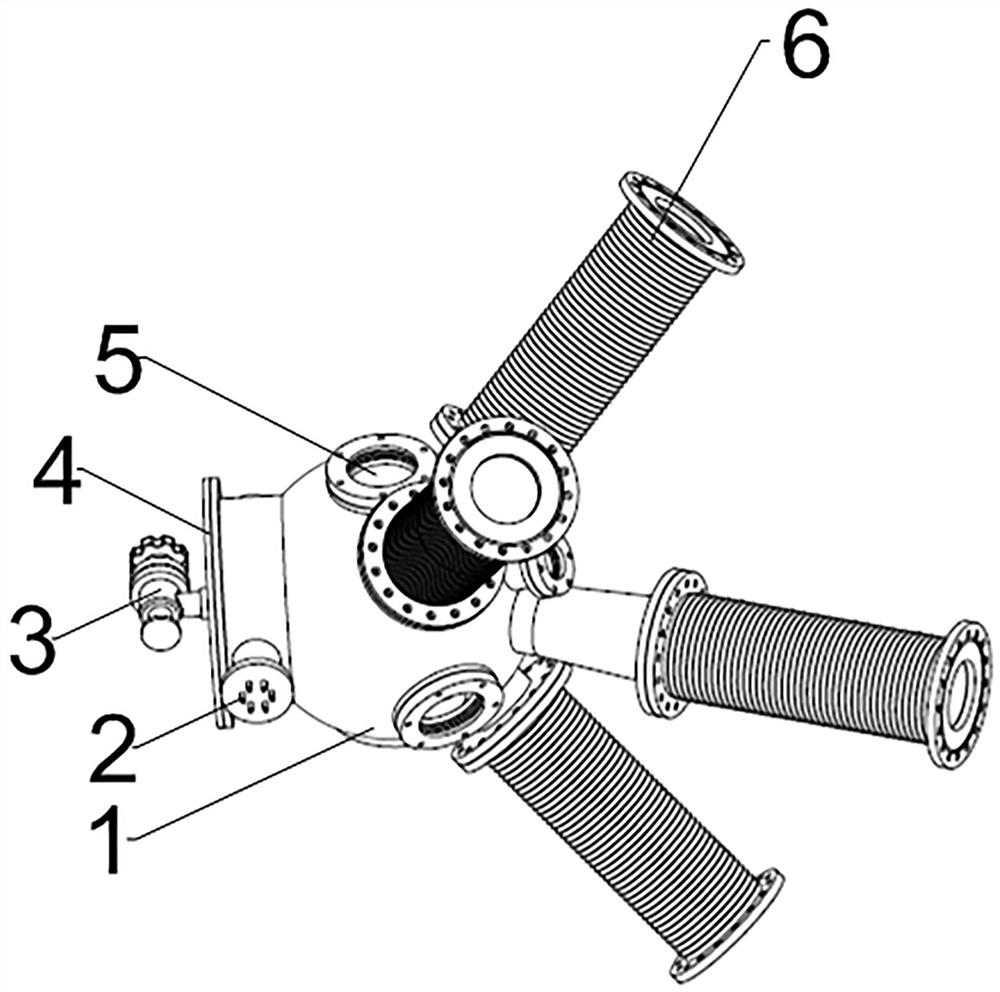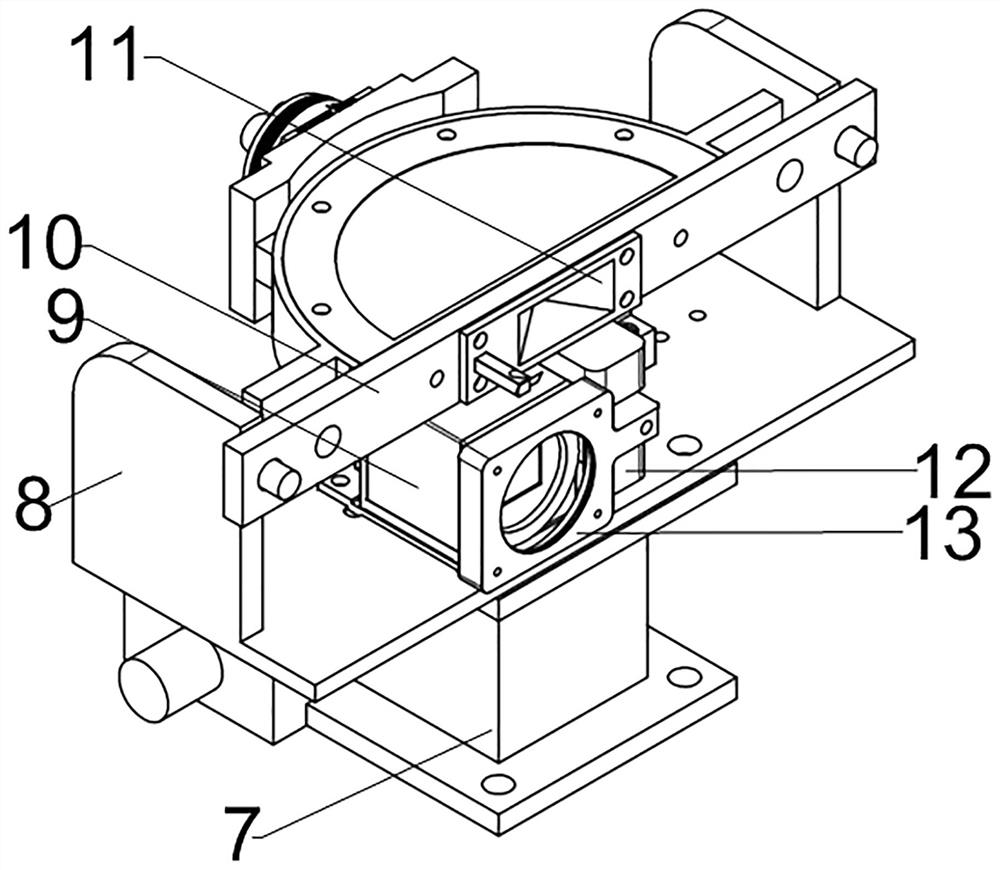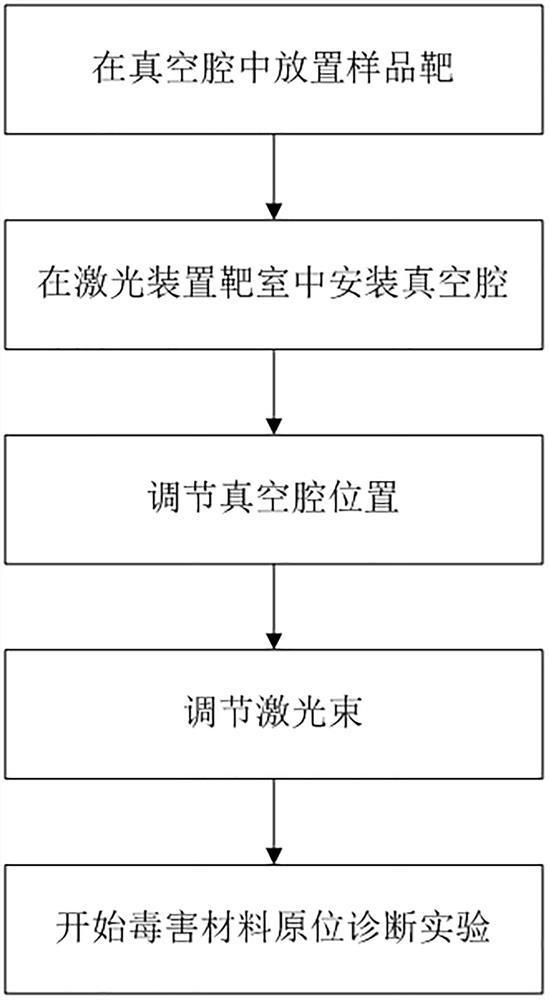Application method of vacuum cavity for in-situ diagnosis of toxic materials based on laser device
A technology of a laser device and an application method, which is applied in the direction of material analysis, measurement device, and material analysis by optical means, can solve the problems such as unavoidable laser device exposure and pollution, and achieve the effect of improving the experimental accuracy and ensuring the freedom of entry and exit.
- Summary
- Abstract
- Description
- Claims
- Application Information
AI Technical Summary
Problems solved by technology
Method used
Image
Examples
Embodiment
[0044] Such as Figure 1~Figure 3 As shown, this embodiment relates to an application method of a vacuum chamber for in-situ diagnosis of toxic materials based on a laser device. The vacuum chamber includes a spherical cavity 1, and several vacuum bellows 6 are distributed outside the spherical cavity 1. One end of the vacuum bellows 6 is fixed and communicated with the spherical cavity 1, the other end of the vacuum bellows 6 is fixed with an optical window through a vacuum flange, and several observation windows 5 are provided on the surface of the spherical cavity 1, A vacuum valve 4 is also provided on the spherical cavity 1 , and the vacuum valve 4 is fixed and communicated with the spherical cavity 1 .
[0045] A connecting flange 3 is provided between the vacuum valve 4 and the spherical cavity 1, and the vacuum valve 4 and the spherical cavity 1 are fixed by the connecting flange 3. The connecting flange 3, the vacuum valve 4 and the inside of the spherical cavity 1 C...
PUM
 Login to View More
Login to View More Abstract
Description
Claims
Application Information
 Login to View More
Login to View More - R&D
- Intellectual Property
- Life Sciences
- Materials
- Tech Scout
- Unparalleled Data Quality
- Higher Quality Content
- 60% Fewer Hallucinations
Browse by: Latest US Patents, China's latest patents, Technical Efficacy Thesaurus, Application Domain, Technology Topic, Popular Technical Reports.
© 2025 PatSnap. All rights reserved.Legal|Privacy policy|Modern Slavery Act Transparency Statement|Sitemap|About US| Contact US: help@patsnap.com



